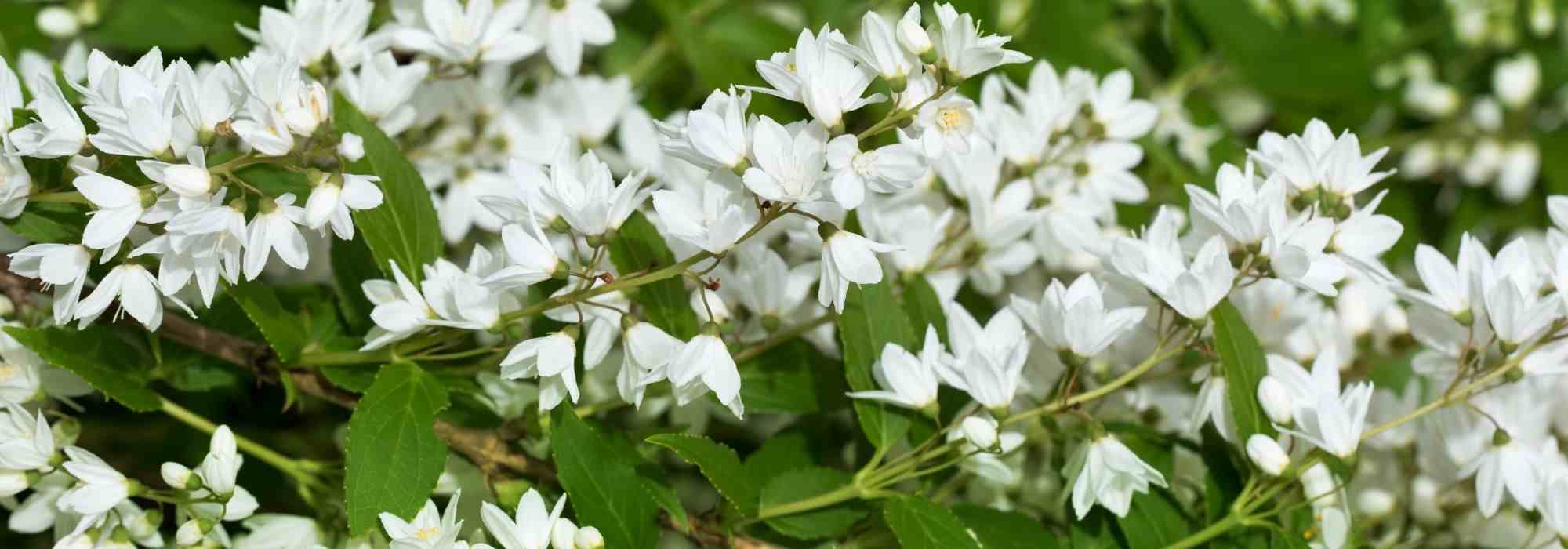
6 bushes for late spring flowering
Our selection of bushes that flower in May/June to grow in the garden
Contents
There are bushes that awaken as winter ends, when temperatures rise and days begin to lengthen gently. And there are late spring-flowering bushes that wait for life to fully return and for the sun to provide more warmth to thrive.
Deciduous or evergreen foliage, white or colourful flowering, fragrant or not, the varieties of bushes blooming in May and June are numerous. In the warm regions south of the Loire, they may bloom a little earlier in spring, while sometimes being late bloomers in northern regions.
Here is our selection of 6 flowering bushes at the end of spring that herald the arrival of summer.
Mexican orange, the delicate and fragrant touch
TheMexican orange blossom (Choisya ternata) has many qualities, but it is especially its refined white flowering and delightful fragrance that make it a highly valued bush in the garden.
Its large compact silhouette forms a modest dome, rarely exceeding 2 metres in height and spread. Slow-growing, it has the advantage of offering evergreen foliage.
The small star-shaped flowers emit a scent reminiscent of orange blossom or orange peel, depending on the variety. Among our favourites:
- ‘Goldfinger’, with bright golden yellow foliage and flowers of a rosy white, which can sometimes even be perpetual in autumn;
- ‘Aztec Pearl’, with very graphic finely cut green foliage and delicately scented flowering, also sometimes perpetual in September;
- ‘Scented Gem’, a small variety not exceeding 1.4 metres, adorned with candy pink buds that turn into white flowers.
To grow the Mexican orange blossom, provide it with light, well-drained soil, even calcareous, to allow water to flow away.
Hardy down to -15°C, it can be grown both in the north, sheltered from cold winds, and in the south of France. In regions with the hottest and driest summers, it should be grown in partial shade or facing east to avoid scorching from the midday sun. Elsewhere, it will appreciate a sunny exposure to bloom well.
Its ability to withstand sea spray and drought makes it a perfect candidate for seaside gardens.
The bush thrives in open ground, in borders or free hedges, but also in pots, to brighten up terraces and balconies.
TheMexican orange blossom easily pairs in the garden and adapts to all atmospheres: modern, exotic, romantic, as well as in a clean white garden.
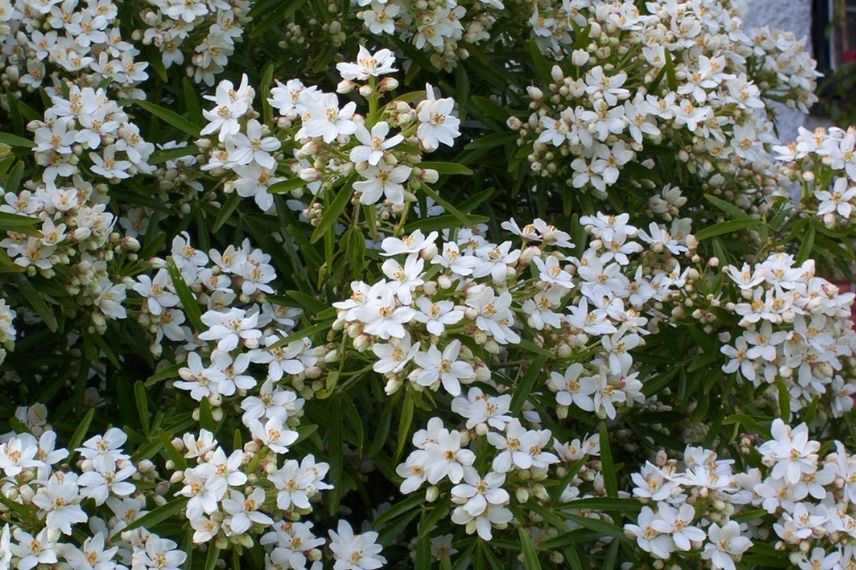
Choisya ‘Aztec Pearl’ (Photo Peganum)
Read also
10 bushes with early spring floweringWeigela, beautiful coloured bells
The weigela is a bush native to the Far East, renowned for its vigour, hardiness, and floribundity.
At the end of spring, it adorns itself with bell-shaped tubular flowers. Its deciduous foliage disappears in late autumn, sometimes showcasing magnificent colour variations.
The weigela displays a beautiful diversity of colours and foliage:
- Weigela florida ‘Ebony and Ivory’ features very dark purple foliage, contrasting beautifully with its pure white flowers;
- ‘Magical Rainbow’ boasts variegated green foliage with golden margins, enhanced by lovely pink flowers;
- ‘Wings of Fire’, with its rare pink-violet flowers, has foliage that changes colour throughout the seasons;
- the weigela ‘Nain rouge Courtanin’ showcases magnificent bright red flowers, illuminated by white stamens.
The weigela is easy to succeed with and to grow, even for beginner gardeners. It is disease-resistant, hardy down to -15°C, tolerates calcareous soils, and requires only simple pruning after flowering.
It thrives in well-drained soils that remain moist in summer, as well as in sunny or partially shaded situations in the warmer regions of southern France.
Small varieties (dwarf or under 1 metre) are ideal for pot cultivation or small spaces, while larger varieties (up to 2.5 metres) are perfect for free hedges or as standalone specimens.
Its rapid growth makes it a perfect candidate for new gardens. It reaches its full size in 5 to 6 years.
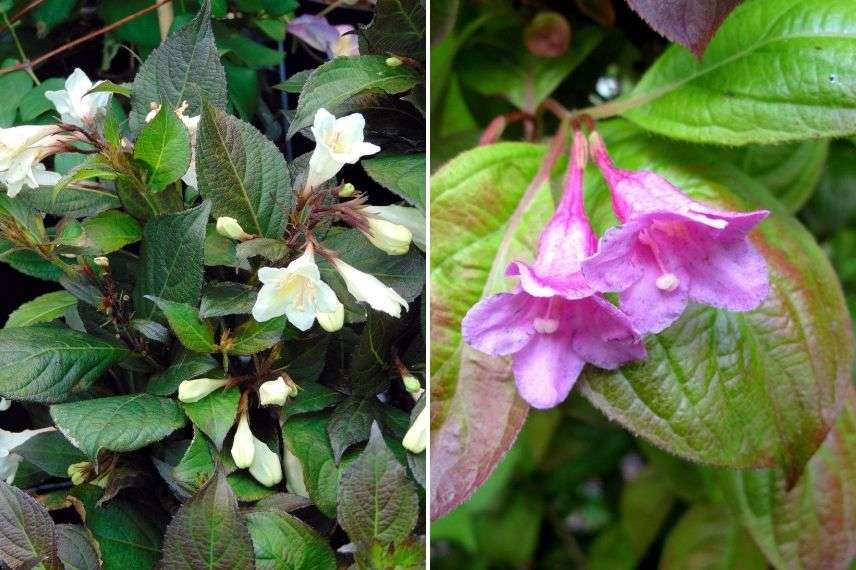
Weigela ‘Ebony and Ivory’ and Weigela ‘Wings of Fire’ (Photo Denolf)
Discover other Spring-flowering shrubs
View all →Available in 0 sizes
Available in 1 sizes
Available in 1 sizes
Available in 1 sizes
Available in 1 sizes
Available in 1 sizes
Available in 1 sizes
Available in 1 sizes
Available in 2 sizes
Available in 1 sizes
The mock orange, a must-have with an enchanting fragrance
The mock orange (Philadelphus) is one of the most fragrant spring shrubs in the garden. It is this sweet and indulgent scent, reminiscent of orange blossom, neroli, or rose, that earns it the nickname ‘Poet’s Jasmine’.
Its white flowers reveal themselves at the end of spring, creating true luminous cascades. Simple or double, solitary or in clusters depending on the variety, it offers a lovely diversity of flowering:
- the Lemoine mock orange ‘Manteau d’Hermine’ is adorned with small double flowers of 4 cm in a cream-white, exuding a powerful fragrance;
- the garden mock orange Philadelphus ‘Starbright’ displays a beautiful purple hue on its young shoots and at the base of its flowers, before blooming into a 5 cm flower of elegant pure white with a heart of bright yellow stamens;
- Philadelphus ‘Innocence’, an old variety, whose simple flowers exude one of the most enchanting fragrances in the group, with notes of vanilla and wild strawberry.
Its deciduous foliage offers green hues, sometimes variegated with gold. Its silhouette can reach 3 metres in height in the larger varieties.
Growing mock orange is not very complicated: the shrub is hardy, tolerates drought, and is relatively disease-resistant. It thrives in all types of soil, even poor ones.
In pots or large containers, the smaller varieties will find their place on a terrace or in an urban garden.
In the ground, mock orange will shine as a solitary specimen, in a flowering hedge, or in large shrub borders.
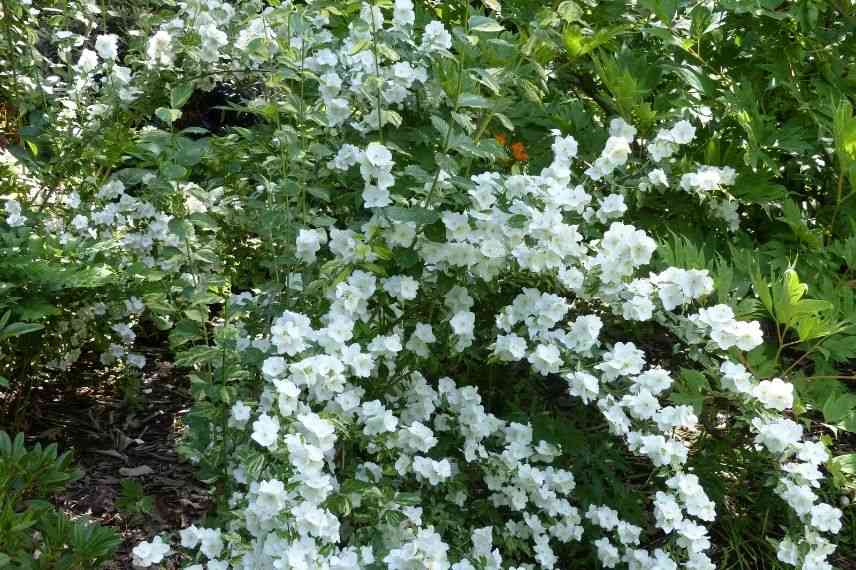
Philadelphus leimonei ‘Innocence’
Ceanothus, with its stunning shades of blue
The ceanothus (Ceanothus), or California lilac, are shrubs with spectacular blue or pale pink flowering, native to North America and Mexico.
The abundant flowering, highly sought after by pollinating insects, lasts about 3 weeks at the end of spring.
The varieties that bloom in May and June have evergreen foliage and add a lovely blue touch to the garden thanks to their paniculate inflorescences:
- Ceanothus (x) ‘Blue Diamond’ with its fragrant dark blue flowers;
- ‘Blue Mound’ adorned with beautiful sky-blue flowers;
- ‘Skylark’, whose deep blue flowers emit a honey-like fragrance;
- Ceanothus thyrsiflorus ‘African Queen‘, with blue flowers beautifully highlighted by golden-green foliage.
Evergreen ceanothus thrive in regions with maritime climates offering mild, dry winters, due to their moderate hardiness (averaging -7 to -10°C) and their aversion to stagnant moisture.
To successfully grow ceanothus, plant them in sunny or partially shaded locations in the warm southern regions to encourage beautiful spring flowering. Prefer a sheltered spot from cold winds.
These shrubs develop in all types of well-drained, non-calcareous soils, even poor and dry ones in summer. Maintenance is limited to balancing pruning after flowering.
Varieties with modest sizes and compact shapes are perfect for small gardens or terraces, but will also fit seamlessly in the foreground of a tall shrub border.
Larger varieties will look stunning when planted alone or to dress a wall.

Ceanothus ‘Skylark’ and Ceanothus ‘Blue Mound’
The abutilon 'Suntense' and its exotic-looking purple flowers
Theabutilon ‘Suntense’ is a beautiful bush resulting from a cross-breeding between two varieties native to Chile.
At the end of spring, it is adorned with an abundance of cup-shaped flowers measuring 6 cm across, in a stunning mauve colour highlighted by a centre of yellow-orange stamens.
Although they are quite ephemeral, the flowers follow one another almost without interruption throughout the flowering period in May and June.
The dark green foliage is evergreen in mild climates, deciduous in cooler regions. At maturity, its height generally does not exceed 3 metres with a spread of 2.5 metres.
Growing abutilon is possible in the ground in southern regions with a mild climate and mild winters, as its hardiness does not exceed -5°C. Elsewhere, it can be perfectly grown in a pot, placed on a terrace or in the garden from April to October, before being wintered in a sheltered, bright room. It will also decorate a conservatory or greenhouse with its exotic charm.
This abutilon will thrive in sunny or partially shaded locations in well-drained soil, even calcareous, rich in organic matter. In summer, it will tolerate drought and occasional missed waterings once well acclimatised.
Its maintenance involves removing faded flowers as they occur, to prevent the bush from losing energy producing seeds, and performing balancing pruning at the end of winter.
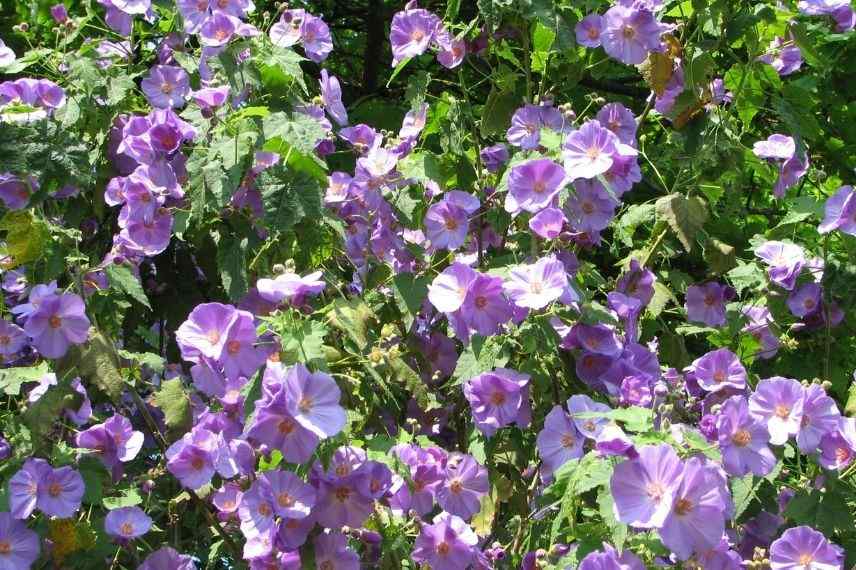
Abutilon vitifolium ochsenii ‘Suntense’ (Copyright Bradman334)
Deutzia, a true cloud of flowers in late spring
The deutzia is a bush native to East Asia. At the end of spring, it is covered with a multitude of star-shaped white or pink flowers.
Among the varieties flowering in May or June, we can mention:
- Deutzia crenata ‘Pride of Rochester’, which produces beautiful double flowers of 12 cm, in immaculate white;
- Deutzia elegantissima ‘Rosealind’, which is adorned with a cloud of pink-lilac flowers;
- Deutzia hybrida ‘Strawberry Fields’, which offers a spectacular flowering of raspberry pink, with petals marginate in white;
- Deutzia gracilis ‘Nikko’, a dwarf variety not exceeding 50 cm, which delights us with slightly fragrant bell-shaped flowers, in elegant pure white.
The cultivation of deutzia is perfect for beginner gardeners, as the bush is low-maintenance, robust, and disease-resistant.
It thrives in full sun or partial shade, in well-drained soils rich in organic matter for optimal flowering, but can tolerate both acidic and calcareous soils.
The bush will bring a lot of light in a free-standing hedge, in a border, or in a pot. Its modest dimensions make it a good candidate for small spaces, and its delicate flowering is ideal for adding a romantic touch to the garden.

Deutzia hybrida ‘Strawberry Fields’
- Subscribe!
- Contents

































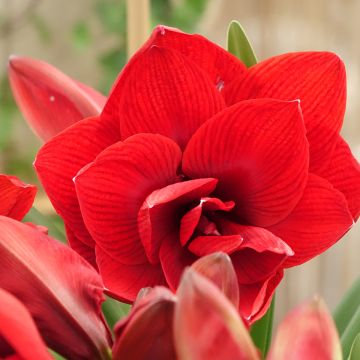


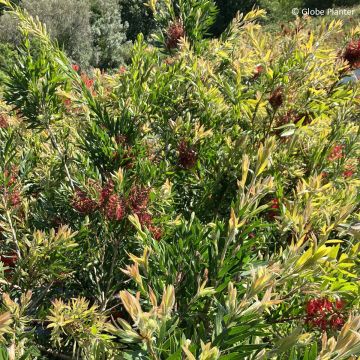
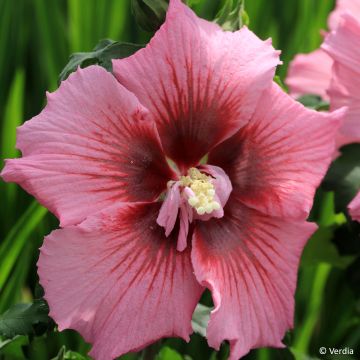
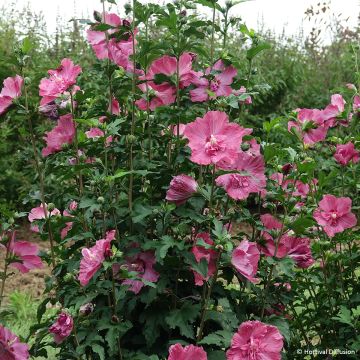
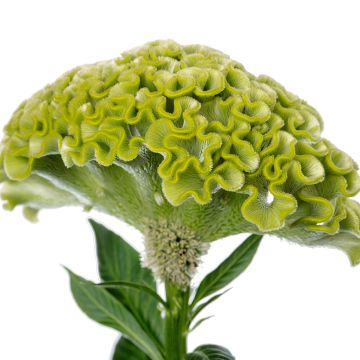
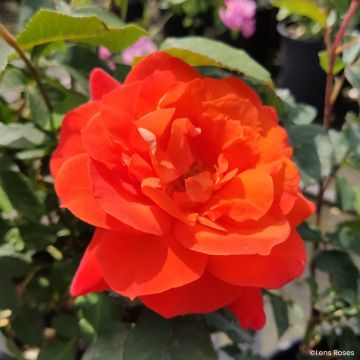
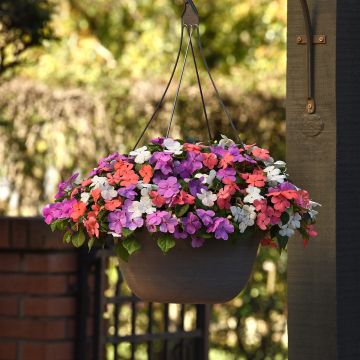
Comments